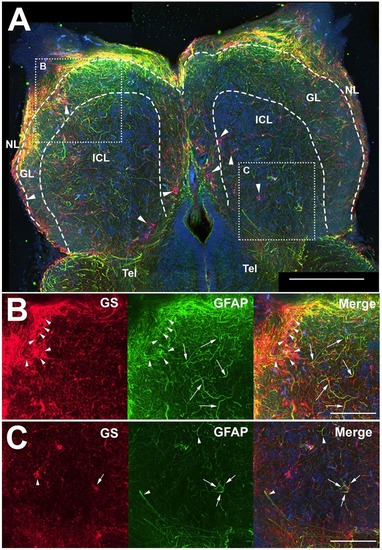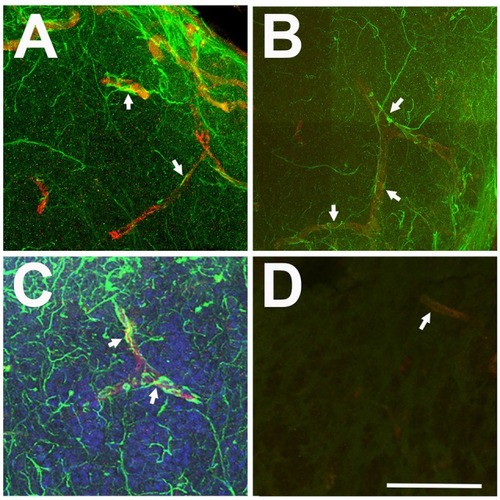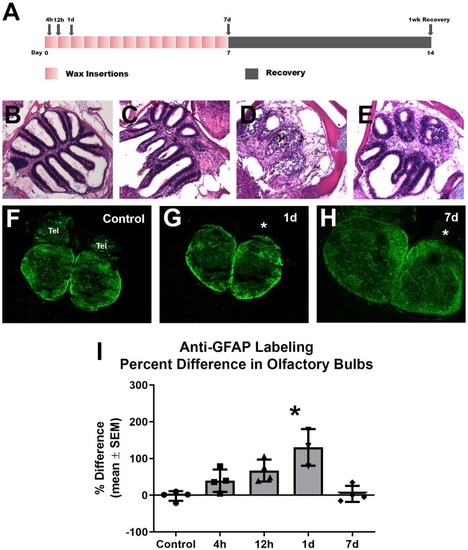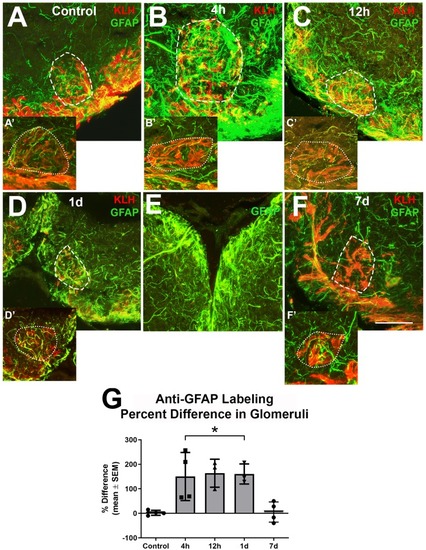- Title
-
Zebrafish Astroglial Morphology in the Olfactory Bulb Is Altered With Repetitive Peripheral Damage
- Authors
- Scheib, J., Byrd-Jacobs, C.
- Source
- Full text @ Front. Neuroanat.
|
Z-stack images of anti-glial fibrillary acidic protein (GFAP) and anti-glutamine synthetase (GS) immunoreactivity in the olfactory bulb of uninjured adult zebrafish. |
|
Relationship between anti-GFAP labeling and capillaries viewed in Z-stack images. |
|
Gross analysis with Z-stack images of anti-GFAP labeling in the olfactory bulb following repetitive peripheral damage. |
|
Higher magnification analysis of Z-stacks of anti-GFAP (green) and anti-keyhole limpet hemocyanin (KLH; red) labeling during repetitive damage to the olfactory organ. |
|
The recovery of the olfactory bulb does not involve evidence of a glial scar. |





